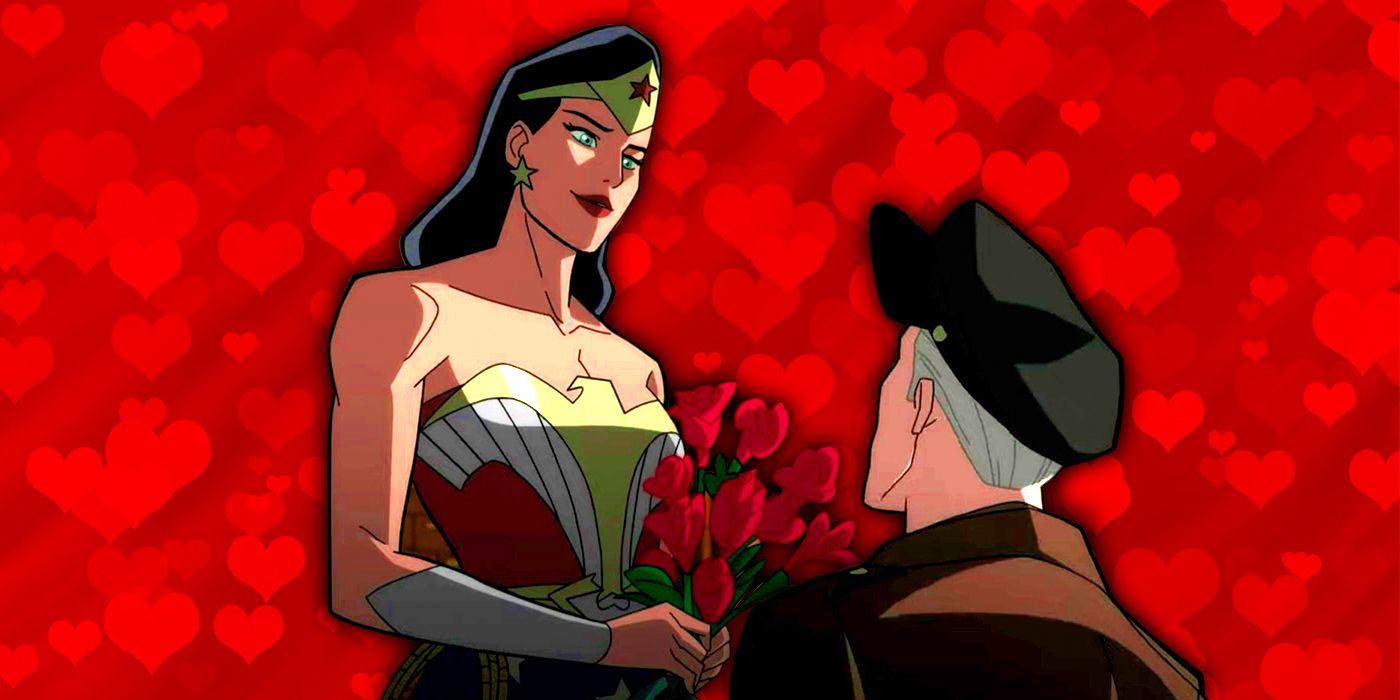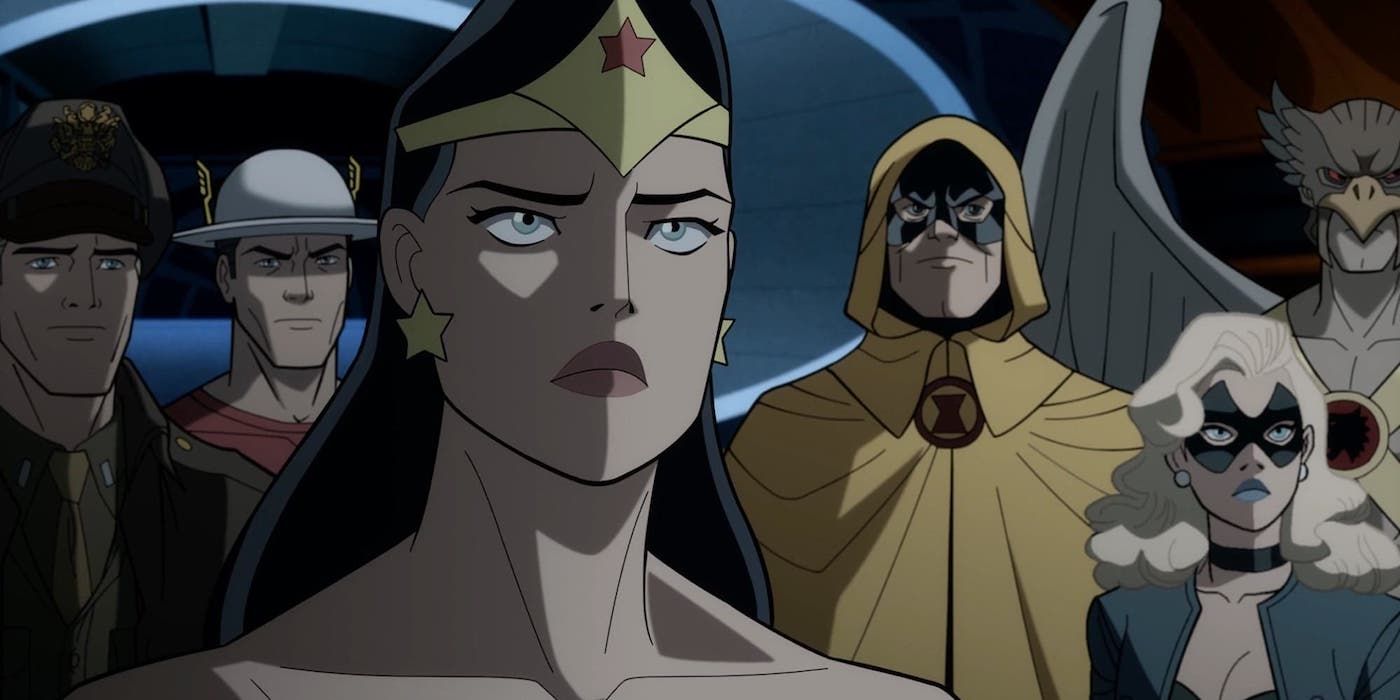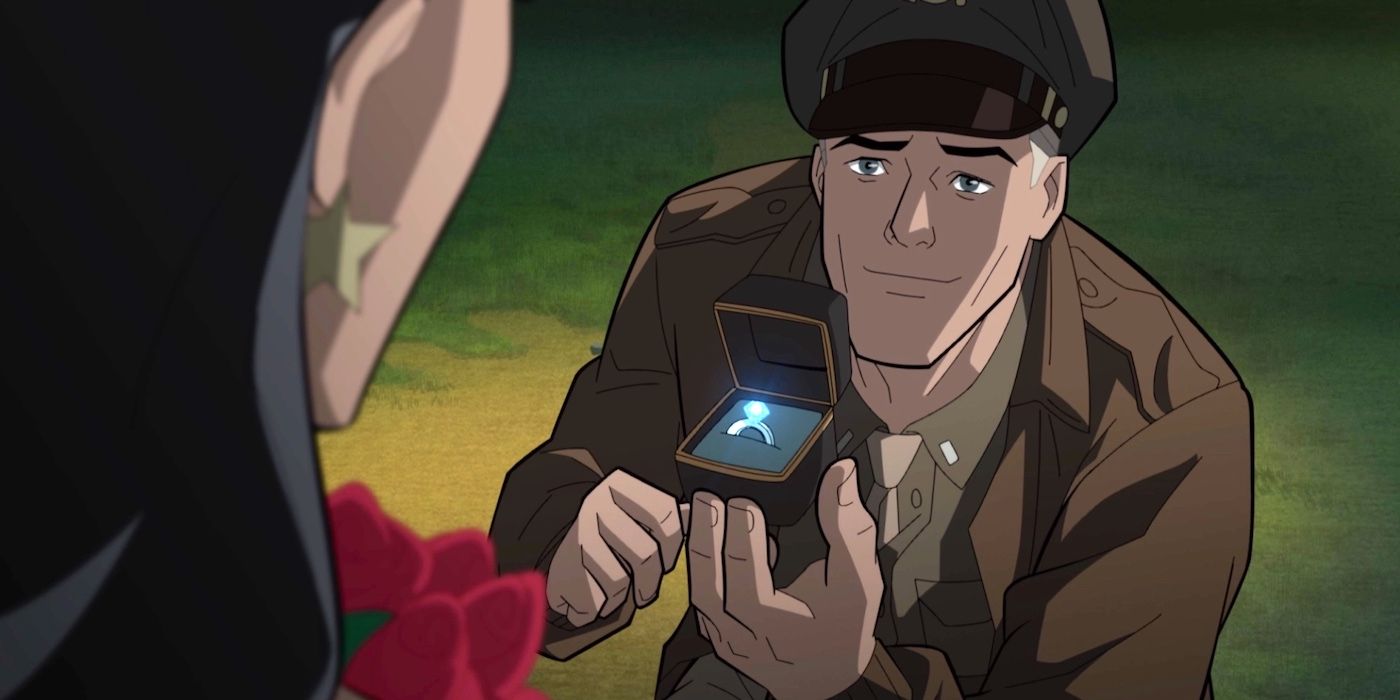WARNING: The following contains spoilers for Justice Society: World War II, now available digitally.
In the DC Extended Universe, Gal Gadot's Wonder Woman has been positioned as a tentpole character since Zack Snyder's Batman vs. Superman: Dawn of Justice. But it was in the Patty Jenkins solo movies where audiences got to learn more about her past with Themyscira, as an Amazon princess away from home. However, while these films also dove deep into Diana's romance with Chris Pine's Steve Trevor, the animated Justice Society: World War II gives them a much better love story.
The problem with the DCEU was that it gave Steve way too many big moments that could've been Diana's, making her a supporting player in her own story. For example, it was Steve who took the poison off into the sky in the first film and died, while the sequel, Wonder Woman 1984, had him opting to go back to the afterlife to re-power Wonder Woman so she could fight Max Lord. These moments made Diana a crutch to Steve and painted her as a lovestruck goddess rather than the woman who should be in charge.
This animated flick fixes that, though, as Wonder Woman doesn't rely on Steve as much. From a similar No Man's Land action sequence to dealing with the loss of Themyscira, Diana does it all without needing a man to support her. And this allows her and Steve to have a much more focused love, not reliant on how they back each other up in war. In fact, it makes Diana even more dutiful as she struggles with wanting to accept his proposals, but ignoring them to lead the other heroes.
She has the same style and ferocity as Gadot's character, but seeing her wrestling with her emotions and denying herself a relationship is powerful and adds nuance. Steve even tells Barry Allen as much, and this creates a more intimate story because their conflict is more personal. It's not like the DCEU's obstacles, which feel more style over substance.
Justice Society: World War II's finale proves all this because it's not so akin to Captain America, where Steve sacrifices himself on a plane and comes back later on. Instead, he's wounded while on the sidelines and perishes with one last proposal, hurting Wonder Woman even more as she says yes too late. It's more dramatic and it speaks to the character as someone who neglected love. The DCEU took a different approach in the 2017 Wonder Woman film, giving Steve the heroic moment to propel Diana into fighting Ares. In contrast, Justice Society: World War II connects Diana more to her inner humanity and shows how much she took Steve for granted.
It stings harder but makes Diana a better hero, which isn't the case for the DCEU Wonder Woman, who was willing to keep Steve alive in another man's body in the sequel, regardless of the consequences. The fact that Justice Society: World War II's Diana gives the ring to Barry to propose to Iris on his world says a lot. It confirms that she has learned from her regret, while ensuring her and Steve's love still has meaning and impact.
Produced by Warner Bros. Animation, DC and Warner Bros. Home Entertainment, Justice Society: World War II stars Stana Katic as Wonder Woman, Matt Bomer as The Flash, Elysia Rotaru as Black Canary, Chris Diamantopoulos as Steve Trevor, Omid Abtahi as Hawkman, Matthew Mercer as Hourman, Armen Taylor as Jay Garrick, Liam McIntyre as Aquaman, Ashleigh LaThrop as Iris West, Geoffrey Arend as Charles Halstead/Advisor, Keith Ferguson as Dr. Fate and Darin De Paul as Roosevelt. The film is now available digitally and will be released on 4K UHD and Blu-ray on May 11.



